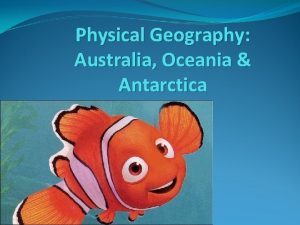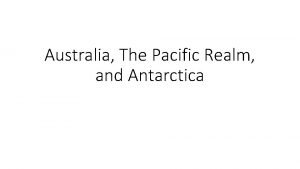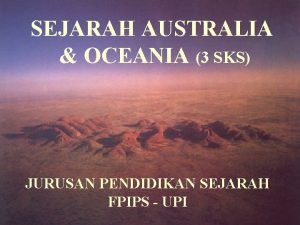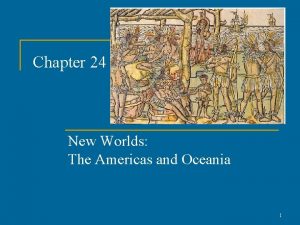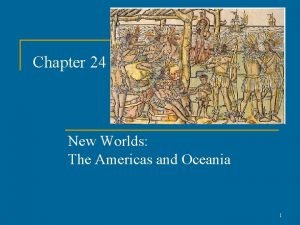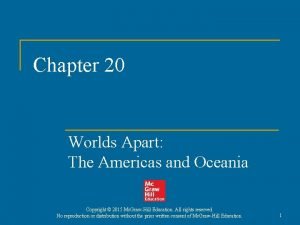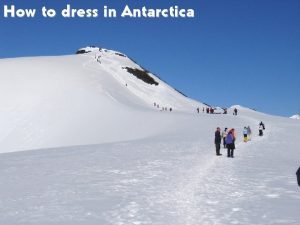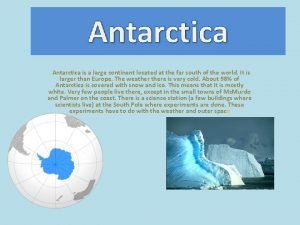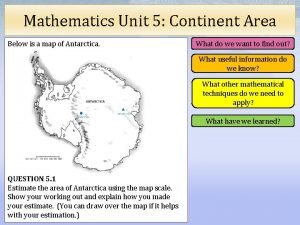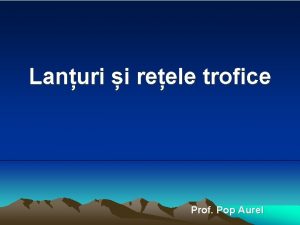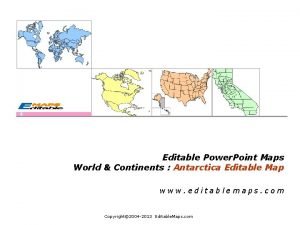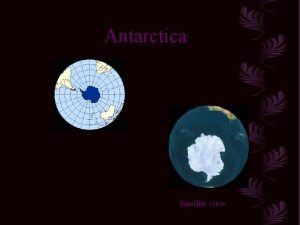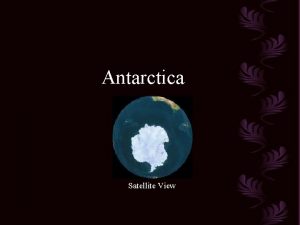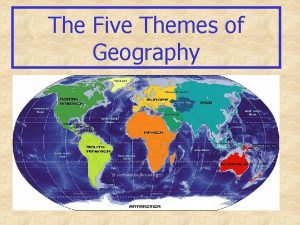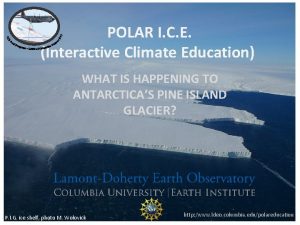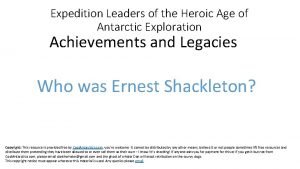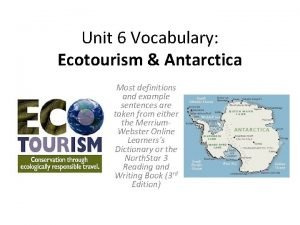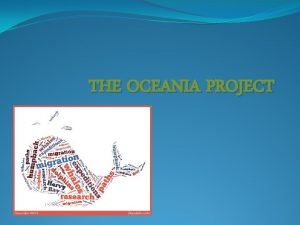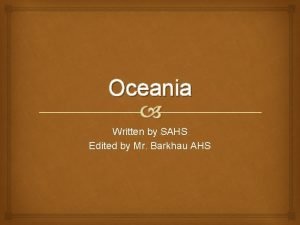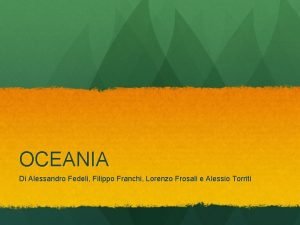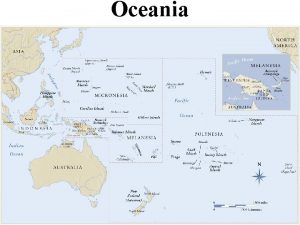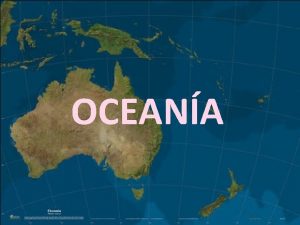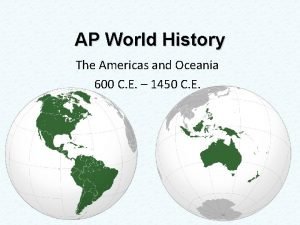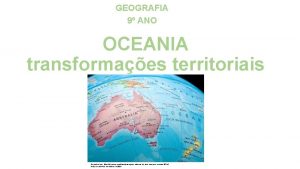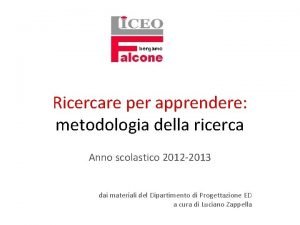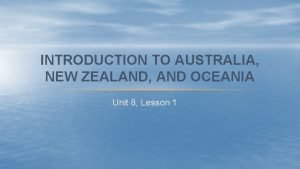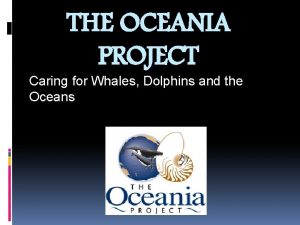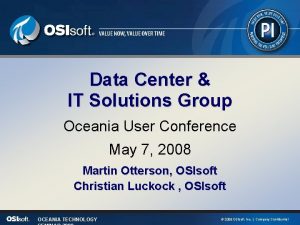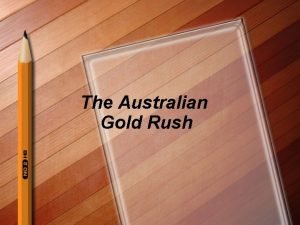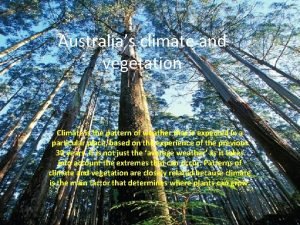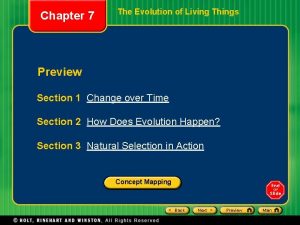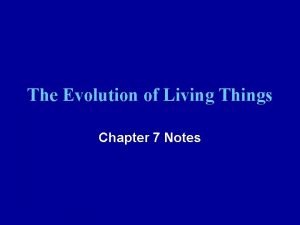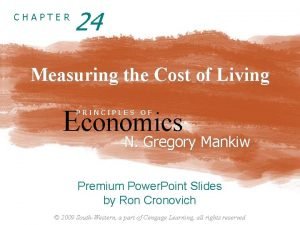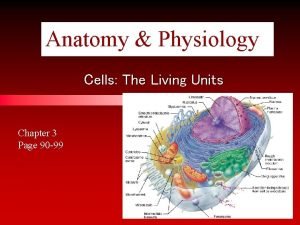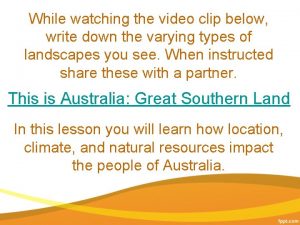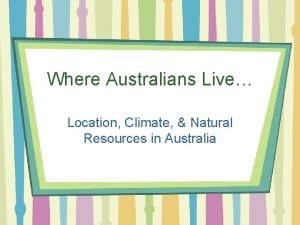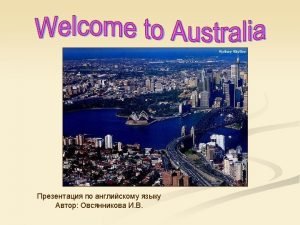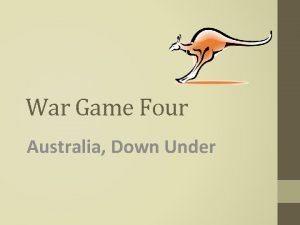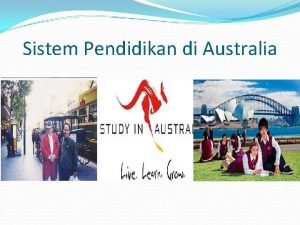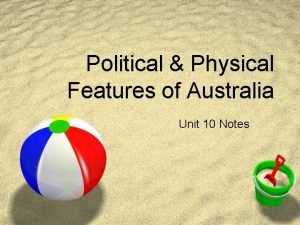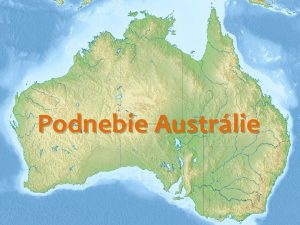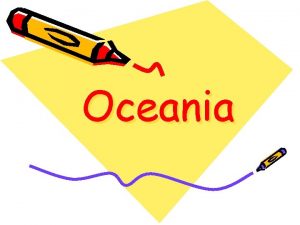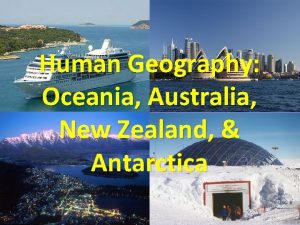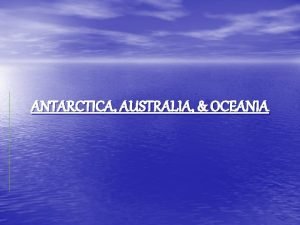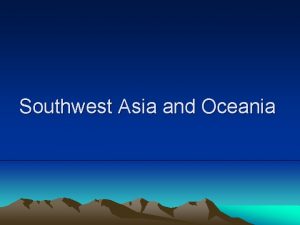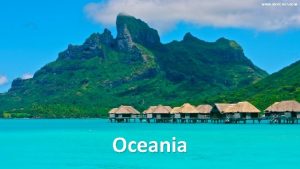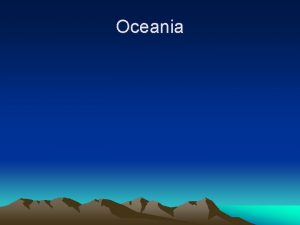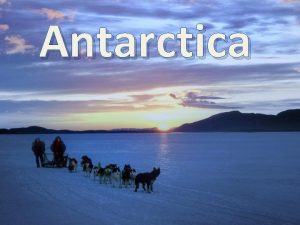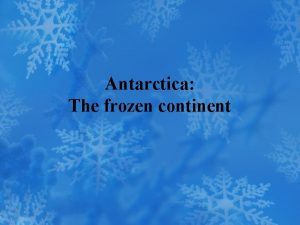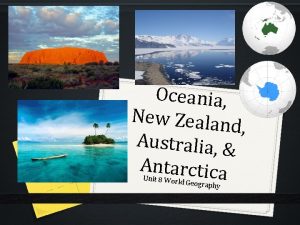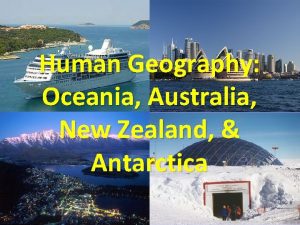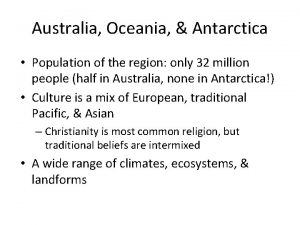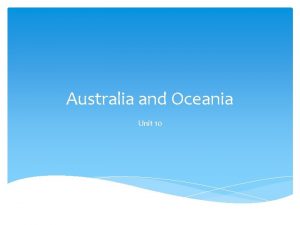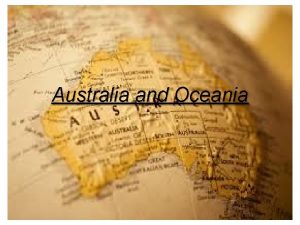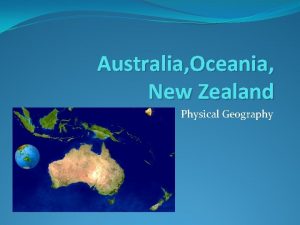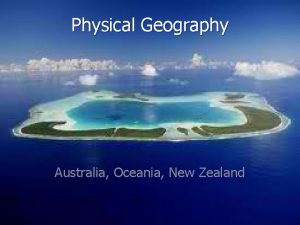Chapter 34 Living in Australia Oceania and Antarctica









































































- Slides: 73

Chapter 34 Living in Australia, Oceania and Antarctica

Chapter 34 -1 Objectives • 1. Describe how people in Australia, New Zealand Oceania make their living. • 2. Discuss the role that trade plays in the economics of South Pacific countries. • 3. Identify the means of transportation and communication that are used in the region.

Terms to Know • station • grazier • copra

Drawing From Experience • If you were planning a trip to Australia, Oceania or New Zealand, what would you plan to see while visiting these places? • What methods of transportation would you use to travel from place to place? • This section focus on economic activities in this region.

Introduction • The people of Australia, Oceania and Antarctica overcome remote locations and challenging environments to earn a living. • What are some economic challenges of people in Australia, Oceania and Antarctica?

Agriculture • The most important economic activity in the South Pacific is agriculture. • Australia and New Zealand export large amounts of farm products. • Australia is the world’s leading producer of wool. • New Zealand produces dairy products, lamb, beef and wool.

• 5% of Australians work in agriculture. • Most of the land is used to raise livestock. • The dry climate forces ranchers to roam over large areas to find enough vegetation for the livestock herds. • Some Australians ranches, called stations, are as large as 6000 square miles. • Because of the dry climate, only 10% of the land can support crops.

• Farmers use irrigation, fertilizers and modern technology to make good use of the croplands. • Wheat grows in the dry Central Lowlands. • Sugarcane grows in wetter climates and fertile soil of the northeastern coast.

• New Zealand uses about half of its land for agriculture. • New Zealand ranchers, known as graziers, raise sheep, beef and dairy cattle. • New Zealand’s fertile soil supports wheat, barley, potatoes and fruits such as kiwi.

Sugarcane


Kiwi Fruit

Kiwi Bird

• Much of Oceania lacks soil suitable for farming. • Most island farmers practice subsistence farming. • Many South Pacific people fish for food. • Some islands have rich soil and enough rainfall to grow a variety of crops for export. • Copra, or dried coconut meat, is a major South Pacific cash crop.

Copra – dried coconut meat

• Fiji exports sugarcane, copra and ginger. • Papua New Guinea exports coffee, copra and cacao.

? • What is the main economic activity in the South Pacific region?

Mining and Manufacturing • Australia is the leading exporter of diamonds, gold, bauxite, opals and iron ore. • There are two obstacles to mining in Australia. • Transportation costs are high. • There are limits on where mining can occur because of conflicts over Aboriginal land rights.

Opals


• New Zealand has a large aluminum industry. • Papua New Guinea mines gold and copper. • Antarctica has large mineral deposits, but mining is prohibited by an agreement signed by 44 countries in 1991.

• The most industrialized countries in the South Pacific region are Australia and New Zealand. • Because agriculture is important in these two countries, food processing is the most important manufacturing activity.

? • What mining and manufacturing activities take place in the region?

Service Industries • Most people in Australia and New Zealand work in service industries. • In Oceania, the major service industry is tourism. • International banking and investment are growing service industries in Nauru. • The expansion of air travel has boosted tourism throughout the region.

? • What is the main service industry in the region?

Global Trade Links • Transportation and communication improvements have increased trade between the South Pacific region and other parts of the world. • Most export income is from agricultural and mining products. • Spices are a major export of Oceania. • Many South Pacific countries import food to supplement their subsistence crops.

• During most of the 1990 s, Australia and New Zealand traded only with the United Kingdom and the United States. • Recently these countries have expanded their trade with Asian countries. • In 1971 countries in Oceania set up the South Pacific Forum. • This organization promotes trade and economic growth. • Some South Pacific islands depend on some outside investment or foreign aid.

? • What are some major exports of the South Pacific region?

Transportation/Communication • Physical barriers, harsh climates and long distances make land travel difficult in the region. • Air and water travel are important ways of overcoming those barriers. • Cargo ships and planes move imports and exports.

• Commercial airlines and cruise ships bring tourists and business travelers. • Pacific islanders use outrigger canoes. • In Antarctica, ships with reinforced bows for breaking ice, small planes and helicopters provide transportation. • The same obstacles that make transportation difficult in the region make communication difficult.

Outrigger Canoe

• Modern technology has increased contacts within Australia, Oceania and Antarctica and with the rest of the world. • New technologies such as cellular, digital and satellite communications and the internet are common in developing areas.

? • Why are transportation and communication difficult in much of the region?

Key Points • Agriculture is the most important economic activity in the region, although mining is done in Australia and some island countries. • Manufacturing in Australia and New Zealand centers on food processing, and the rest of the region engages in smallscale production of clothing and crafts.

• The importance of service industries, particularly tourism, is increasing in the economies of the region. • Transportation and communications technologies, such as air travel, satellite communications, and the internet, are helping people in the region to overcome geographic obstacles.

People and Their Environment Chapter 34, Sec. 2

Sec. 2 Objectives ü Specify why Australia, Oceania and Antarctica face many environmental challenges. ü Explain the effects that nuclear testing had on the region. ü Discuss why global warming and the thinning of the ozone layer are special challenges for the region.

Terms to Know • marsupial • introduced species • food web • ozone layer • El Niño-Southern Oscillation (ENSO) • diatom

Drawing From Experience • What is global warming? • How can it affect you? • How would it affect the islands and coastal areas of the region? • This section focuses on the environmental challenges facing the people of the region.

Introduction • Scientists believe that 40% of Western Australia’s wheat-growing area could be lost to salty swamps within 20 years. • This is one problem that has resulted from human interaction with the environment. • The countries of the region are working to solve these challenges.

? • What is one of the environmental challenges facing Australia?

Managing Resources • Australia, Oceania and Antarctica have some of the earth’s richest and most diverse natural resources. • Sometimes these resources have been mismanaged. • As a result, the region faces many environmental challenges.

• Australia has many unique animal species, including 144 kinds of marsupials. • These are mammals such as kangaroos or koalas whose babies live in a pouch until they mature. • Native animals have been threatened by introduced species, or nonnative animals that have been brought to the continent by humans.

• The introduced species have taken over natural habitats of many of Australia’s native species. • Some native species have become extinct and others are endangered. • Efforts to help the native species include:

A. the use of electric fencing to keep out nonnative animals. B. the setting up of hunting and trapping programs. C. the introduction of natural predators of the introduced species. D. the creation of reserves where wildlife is protected.

Marsupials – Koala

Wombat

Kangaroos

Blue Fairy Penguins



Wallaby

Dingo

Dingo Pup

Goanna

Tree Frog

Tree Kangaroos


Cane Toads

• The protection of forest, soil and freshwater resources is another environmental concern in the region. • In Australia, woodlands have been cleared for farms and grazing lands. • This deforestation causes soil erosion. • Countries in the region, such as New Zealand Papua New Guinea, are finding ways to harvest the valuable timber resources without damaging the environment.

• Drought, salt, irrigation and agricultural runoff threaten freshwater sources in Australia and Oceania. • Lack of clean water keeps the standard of living low in some countries. • Toxic wastes, tourists, boaters, divers and oil-shale mining endangers sea life in the Great Barrier Reef and other coral reefs.

• Algae and plankton are key parts of the ocean’s food web, an interlinking chain of predators and their food sources in the ecosystem. • As the tiny food sources die, so do the larger plants and animals that eat them.

Nuclear Weapons • In the late 1940 s and 50 s, the U. S. and other countries tested nuclear weapons in the South Pacific region. • This testing has caused radiation exposure and environmental damage to the region, leading to people’s deaths, illness and genetic damage. • In the 1990 s the U. S. gave money to the region to help clean up the environment.

? • What environmental challenges face the countries of the South Pacific?

Atmosphere and Climate • Australia, Oceania and Antarctica face challenges with atmosphere and climate changes. • There is a hole in the ozone layer of the atmosphere over Antarctica. • The ozone layer has protective gases that prevent harmful solar rays from reaching the earth’s surface.

• The loss of the protective ozone shield can cause overexposure to the sun’s ultraviolet rays. • This overexposure can lead to skin cancer and cataracts in the eyes. • It can also contribute to global warming. • Global warming may cause an increase in the occurrence of El Niño-Southern Oscillation (ENSO), or changes in the El Niño weather pattern. • This can cause droughts in Australia and cyclones in the South Pacific.

• Some scientists claim that global warming could cause polar ice caps to melt and warm ocean waters to expand. • If this happens, many of Oceania’s islands would be flooded by rising ocean levels. • Rising ocean temperatures could cause the overgrowth of certain types of algae and plankton. • It could also cause the death of diatoms, plankton that grow in cold ocean waters.

• The loss of this plankton would affect other sea life in the food web. • Scientists in the region are studying global warming to find its causes, consequences and solutions.

Diatoms

? • Why is global warming a concern in the South Pacific region?

Key Points • Australia, Oceania and Antarctica have many natural resources, but the region’s environment is threatened by human activity. • Governments and individuals in the region are focusing on balanced management of water resources, forests, land wildlife.

• Nuclear testing conducted in Oceania during the 1940 s and 50 s had a lasting impact on people and the environment. • Scientists are studying global warming and the thinning ozone layer to prevent potential risks.

End of Slide Show
 Australia oceania and antarctica
Australia oceania and antarctica Australia the pacific realm and antarctica
Australia the pacific realm and antarctica Sejarah australia dan oceania
Sejarah australia dan oceania Chapter 24 new worlds the americas and oceania
Chapter 24 new worlds the americas and oceania New worlds the americas and oceania
New worlds the americas and oceania Chapter 24 the americas and oceania
Chapter 24 the americas and oceania Chapter 20 the americas and oceania
Chapter 20 the americas and oceania Living and working conditions in australia 1900
Living and working conditions in australia 1900 Venn diagram living and nonliving things
Venn diagram living and nonliving things Oceania history and culture
Oceania history and culture Colonial encounters in asia africa and oceania
Colonial encounters in asia africa and oceania How to dress for antarctica
How to dress for antarctica Where is antarctica located
Where is antarctica located How much is 100 grams
How much is 100 grams Cool antarctica.com
Cool antarctica.com Estimate the area of antarctica using the map scale
Estimate the area of antarctica using the map scale 5 lanturi trofice
5 lanturi trofice Antarctica outline map
Antarctica outline map Antarctica satellite view
Antarctica satellite view Satellite view of antarctica
Satellite view of antarctica Satellite photos of antarctica
Satellite photos of antarctica Antarctica is in which hemisphere
Antarctica is in which hemisphere Vicente mateos
Vicente mateos Map of antarctica
Map of antarctica Heroic age of antarctic exploration
Heroic age of antarctic exploration Ecotourism vocabulary
Ecotourism vocabulary Tomato living or nonliving
Tomato living or nonliving Living non living dead
Living non living dead What is the smallest living unit in all organisms?
What is the smallest living unit in all organisms? Oceania project
Oceania project New zealand main language
New zealand main language Settore primario oceania
Settore primario oceania Oceania 1
Oceania 1 Vertientes hidrograficas de oceania
Vertientes hidrograficas de oceania 1984 orwell map
1984 orwell map Oceania physical features
Oceania physical features Oceania ap world history
Oceania ap world history Danças da oceania
Danças da oceania London, airstrip one, oceania
London, airstrip one, oceania Asia olympic flag
Asia olympic flag Why are parents in oceania often afraid
Why are parents in oceania often afraid Slides sobre a oceania 9 ano
Slides sobre a oceania 9 ano Continentes de asia
Continentes de asia Esempio sitografia tesi
Esempio sitografia tesi Lesson 1: an introduction to oceania
Lesson 1: an introduction to oceania The oceania project
The oceania project Oceania solutions group
Oceania solutions group When did the gold rush start and end in australia
When did the gold rush start and end in australia Mark de sydney australia y hans de berlin
Mark de sydney australia y hans de berlin Australia climate and vegetation
Australia climate and vegetation Internal medicine society of australia and new zealand
Internal medicine society of australia and new zealand Christian and missionary alliance australia
Christian and missionary alliance australia Chapter 7 the evolution of living things answers
Chapter 7 the evolution of living things answers Chapter 23 living in a world at war
Chapter 23 living in a world at war Chapter 22 living in hard times
Chapter 22 living in hard times Imagine yourself as a living house chapter
Imagine yourself as a living house chapter A person at the midpoint of the health continuum is
A person at the midpoint of the health continuum is Chapter 7 the evolution of living things answers
Chapter 7 the evolution of living things answers Chapter 4 tissue the living fabric
Chapter 4 tissue the living fabric Chapter 3 cells the living units
Chapter 3 cells the living units Chapter 3 cells the living units
Chapter 3 cells the living units Measuring the cost of living
Measuring the cost of living Mitosis
Mitosis Australia major natural resources
Australia major natural resources Central australia natural resources
Central australia natural resources Capital of australia
Capital of australia Who represents the queen in australia's government
Who represents the queen in australia's government Morning glory australia
Morning glory australia Tall man lettering
Tall man lettering Sistem pendidikan australia
Sistem pendidikan australia Australia video
Australia video Dpid australia post
Dpid australia post Physical features of australia
Physical features of australia Artézske pramene v austrálii
Artézske pramene v austrálii
